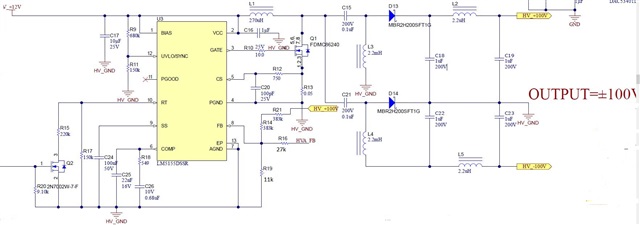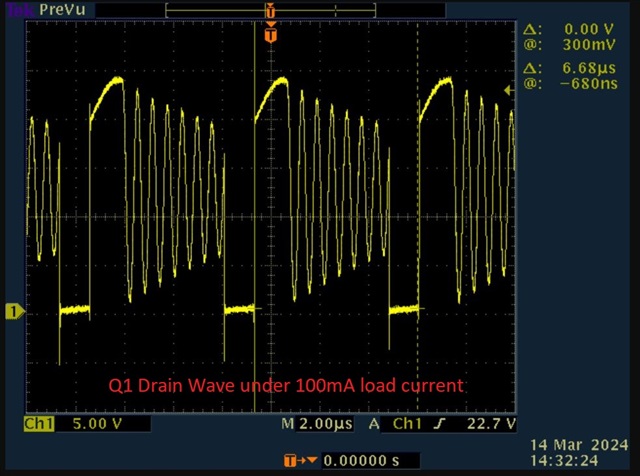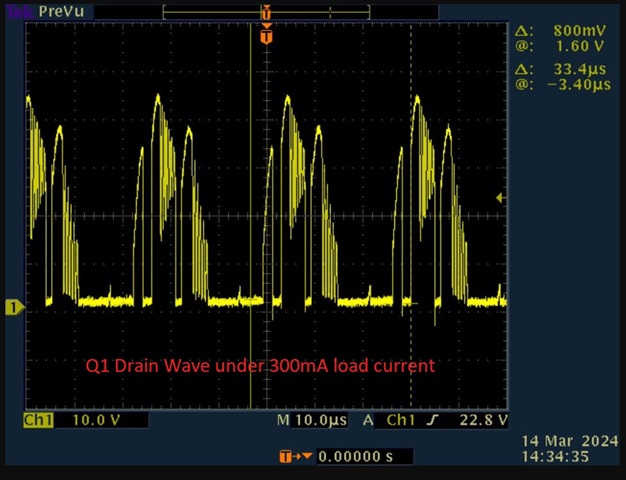Hi, Dear Appplication engineer
I'm using LM5155 to design a adjustable high voltage power supply based LM5155. the schematic as below figure shows. the input voltage is 12V. the expected output voltage is: +-5V ~+-100V. expected output current is:0.2A@+/-100V and 1.5A@+/-10V.
1. I can get maaximum output power is 0.17A@70.4V and 0.6A@9.5V. then the voltage will out of control and drop obviously. I can measure that drain current of MOSFET is ~2A and CS voltage is ~0.1V. the saturation current of L1 is 1.74A.
2. So, I update L1 from 270uH/1.74A to 47uH/4.4A. update L3=L4=2.2mH/0.26A to L3=L4=47uH/1.7A. update R13 from 0.05ohm to 0.01ohm. with these update, I hope the maximum output can meet my requirements. however, the maximum output will be less than 0.3A@9.5V and output will be drop and out of control.
could you please help me to calculate the compensation network value of R18, C25 and C26? remember that output will be adjusted in range of +/-5V to +/-100V.



thanks a ton for your supporting!
regards,
Bill

